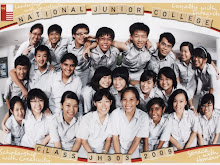trip to Pulau Ubin

The photo above shows the pollution in pulau ubin. As we found out, there is actuallt a lot of untreated garbage in pulau ubin. This may be caused by the lack of dustbin and the waste management system in pulau ubin is not very good. Hence, in our project, we need to solve this problem to prevent these wastes from harming the environment. Thus, we come up with a solution.
We will create a full Public waste collection System to collect all the refuse. Garbage can and refuse collection points will be distributed all over the island according to population density. After that, we will transfer all the refuse back to mainland to recycle and dissolve.
2.water sources

There are actually small revers in Pulau Ubin. We can make full uses of these water resources when we build our sustainable island. For example, agriculture area could be arranged near the water resources. If necessary, widen the river could also be a way to do small transportation.
3.the choose of location for all the plants
when we cycle around the island, we had decided where to place different plants. For example,
Here would be a goood place for agricultural development. Why? Frstly, the ground is flat. And it is near water resources.
This trip was meaningful. We got to know more facts about pulau ubin and it is very helpful to our project. Last but not least, we had fun there. :D
Saifan (24)











